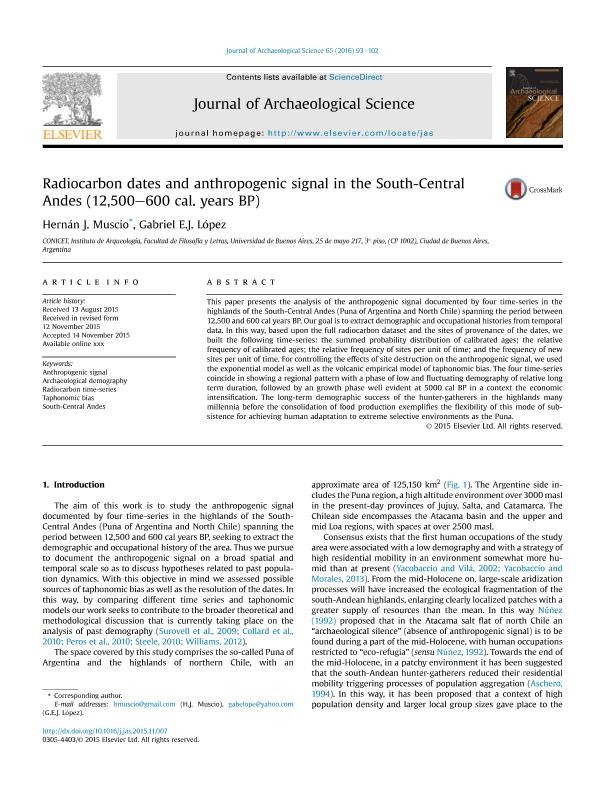Artículo
Radiocarbon dates and anthropogenic signal in the South-Central Andes (12,500 - 600 cal. years BP
Fecha de publicación:
01/2016
Editorial:
Academic Press Ltd - Elsevier Science Ltd
Revista:
Journal of Archaeological Science
ISSN:
0305-4403
Idioma:
Inglés
Tipo de recurso:
Artículo publicado
Clasificación temática:
Resumen
This paper presents the analysis of the anthropogenic signal documented by four time-series in the highlands of the South-Central Andes (Puna of Argentina and North Chile) spanning the period between 12,500 and 600 cal years BP. Our goal is to extract demographic and occupational histories from temporaldata. In this way, based upon the full radiocarbon dataset and the sites of provenance of the dates, we built the following time-series: the summed probability distribution of calibrated ages; the relative frequency of calibrated ages; the relative frequency of sites per unit of time; and the frequency of new sites per unit of time. For controlling the effects of site destruction on the anthropogenic signal, we used the exponential model as well as the volcanic empirical model of taphonomic bias. The four time-seriescoincide in showing a regional pattern with a phase of low and fluctuating demography of relative long term duration, followed by an growth phase well evident at 5000 cal BP in a context the economic intensification. The long-term demographic success of the hunter-gatherers in the highlands manymillennia before the consolidation of food production exemplifies the flexibility of this mode of subsistence for achieving human adaptation to extreme selective environments as the Puna
Archivos asociados
Licencia
Identificadores
Colecciones
Articulos(SEDE CENTRAL)
Articulos de SEDE CENTRAL
Articulos de SEDE CENTRAL
Citación
Muscio, Hernán Juan; Lopez, Gabriel Eduardo Jose; Radiocarbon dates and anthropogenic signal in the South-Central Andes (12,500 - 600 cal. years BP; Academic Press Ltd - Elsevier Science Ltd; Journal of Archaeological Science; 65; 1-2016; 93-102
Compartir
Altmétricas




